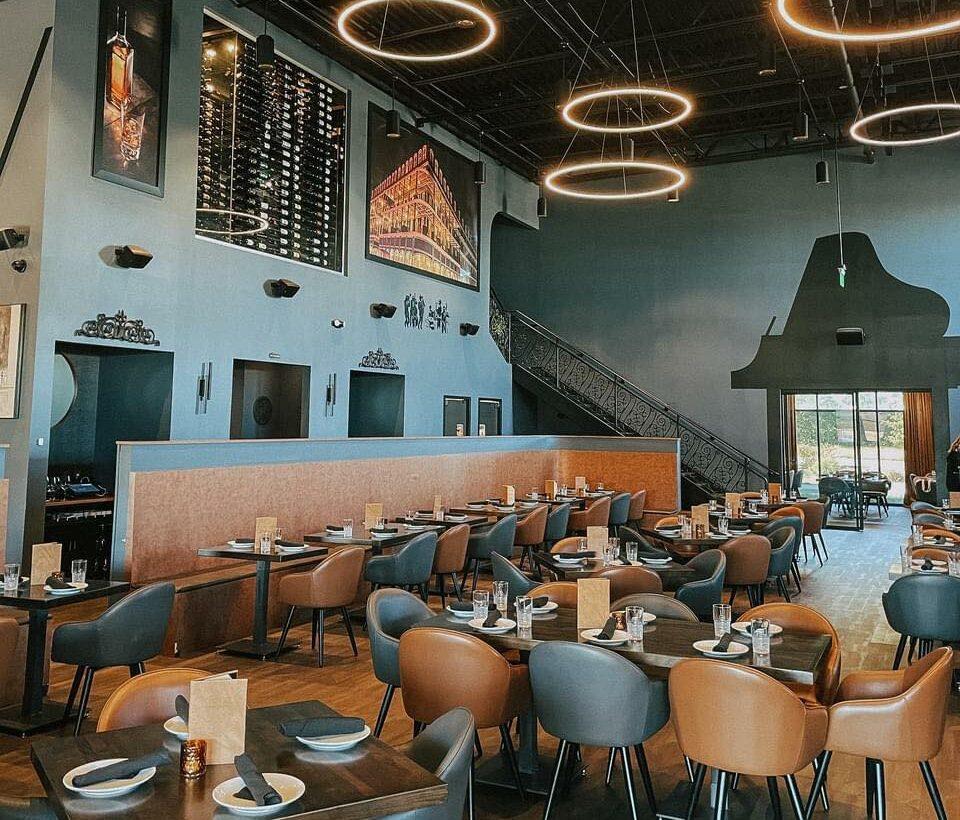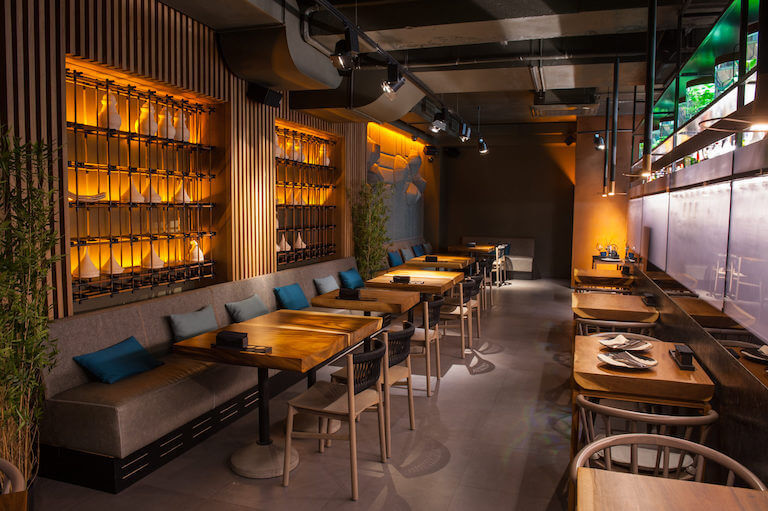Pan Asian Dining Islamabad: Enjoy Authentic Asian Meals
Pan Asian Dining Islamabad: Enjoy Authentic Asian Meals
Blog Article
Savor Genuine Oriental Cuisine With a Pan-Asian Spin for a Cooking Journey
Getting started on a culinary trip via genuine Oriental cuisine, boosted with a Pan-Asian spin, uses an one-of-a-kind possibility to check out the rich tapestry of flavors that specify the area's diverse culinary traditions. As you consider these tempting recipes, take into consideration the cultural stories and historic influences that form them, each bite providing a story waiting to be uncovered. pan asian restaurant Islamabad.

Discovering Pan-Asian Flavors
In the realm of international gastronomy, Pan-Asian cuisine stands apart for its amazing diversity and the harmonious interaction of flavors from numerous Oriental societies. This culinary technique celebrates the abundant practices and distinct active ingredients discovered throughout the continent, developing a tapestry of preferences that is both fascinating and satisfying. Secret to Pan-Asian cuisine is its capability to balance contrasting flavors-- pleasant, salted, spicy, and sour-- while highlighting the quality and high quality of each active ingredient.
From the umami-rich soy sauce of Japan to the intense chili peppers of Thailand, Pan-Asian food supplies a comprehensive palette of tastes. These components are typically incorporated in inventive ways, improving recipes with layers of intricacy. As an example, using great smelling natural herbs such as lemongrass and cilantro, common in Vietnamese and Thai food, includes a refreshing brightness to dishes, while the unification of coconut milk supplies a creamy, rich texture.
The emphasis on fresh produce and fragrant seasonings guarantees that each meal is not only a banquet for the preference buds but likewise for the detects. Pan-Asian food welcomes diners to start a cooking trip, discovering the substantial and differed landscapes of Eastern gastronomy with every bite.
Blend Recipes to Try
While Pan-Asian food is celebrated for its conventional flavors, the contemporary cooking landscape is increasingly accepting blend recipes that blend these traditional elements with impacts from other areas. This ingenious method not just honors the abundant heritage of Oriental cooking arts however likewise presents unique taste experiences that interest modern palates.
An archetype of such a blend dish is the Korean-Mexican taco, where marinated bulgogi beef is covered in a cozy tortilla, covered with kimchi and a hot gochujang-infused salsa. This combination weds the bold, full-flavored flavors of Korea with the dynamic, fresh aspects of Mexican cuisine. In a similar way, sushi burritos have actually acquired popularity, amalgamating the delicate artistry of Japanese sushi with the passionate, hand-held benefit of a burrito, commonly featuring blend active ingredients like tempura shrimp and avocado with a drizzle of wasabi mayo.
Another notable meal is Thai curry ramen, which instills the creamy, aromatic flavors of Thai curry right into the calming brew of typical Japanese ramen, producing a harmonious blend that tantalizes the senses. These fusion meals extend beyond simple novelty; they represent a cooking dialogue in between cultures, motivating exploration and development on the planet of Pan-Asian cuisine.
Important Components and Flavors
To really appreciate Pan-Asian cuisine, one have to understand the necessary ingredients and seasonings that form its foundation. This diverse culinary style draws from a rich tapestry of Asian traditions, employing a harmonious blend of structures and flavors. Secret active ingredients include soy sauce, fish sauce, and oyster sauce, which present a full-flavored umami depth necessary to Oriental recipes. Complementary to these are rice vinegar and mirin, lending a fragile acidity and sweet taste.
Aromatic elements are pivotal, with garlic, ginger, and lemongrass being common across different Pan-Asian dishes. These components provide an aromatic base that boosts the complexity of tastes. Seasonings such as star anise, cardamom, and cinnamon introduce warmth and personality, echoing impacts from areas like China and India.

Food Preparation Methods and Tips
Understanding the art of Pan-Asian food needs familiarity with its unique food preparation strategies, each adding to the vivid tapestry of tastes this culinary custom is commemorated for. Central to these techniques is the stir-fry, a quick cooking strategy that preserves the nutritional honesty and brilliant colors of components. Utilizing a wok, the stir-fry method enables for also warmth distribution, vital for attaining the characteristic structure and flavor equilibrium of Pan-Asian meals.
Another fundamental strategy is steaming, especially common in Chinese food. This gentle method preserves the all-natural flavors and nutrients of ingredients, making it ideal for fish and shellfish and vegetables. Dumplings, a precious staple, commonly benefit from steaming, leading to soft, delicious structures.
Grilling, likewise indispensable, presents smoky midsts to dishes such as Korean bulgogi or Japanese yakitori (Instagrammable restaurants Islamabad). This strategy commonly involves seasoning components, allowing flavors to penetrate deeply before food preparation over an open flame or hot plate
Last but not least, mastering the art of stabilizing tastes-- sweet, sour, salted, bitter, and umami-- is critical. Correctly layering these elements can raise a meal from regular to amazing, providing a complicated and satisfying cooking experience that symbolizes the essence of Pan-Asian food.
Eating Experiences Worldwide
Around the world, Pan-Asian food uses an exceptional dining experience, celebrated for its abundant tapestry of tastes and lively presentations. This cooking phenomenon has gone beyond cultural limits, capturing the hearts and palates of food fanatics worldwide. In multicultural cities like New York, London, and Sydney, Pan-Asian dining establishments act as melting pots where culinary practices from Thailand, Japan, China, and beyond assemble, offering diners with an eclectic mix of meals that highlight the area's variety.
The international allure of Pan-Asian cuisine lies in its pop over to this site capacity to offer both credibility and innovation. Cooks skillfully wed typical ingredients such as lemongrass, soy sauce, and miso with modern techniques, resulting in meals that are both acquainted and refreshingly brand-new. This blend allows diners to start a culinary journey that chick fil a breakfast respects heritage while accepting modernity.
Moreover, eating experiences are boosted with attentively created environments that show the principles of Pan-Asian appearances. From minimal Japanese-inspired interiors to dynamic Thai-themed rooms, each dining establishment provides a distinct ambiance that enhances the cooking offerings. Because of this, clients are not simply taking in a meal but partaking in a cultural experience, making Pan-Asian eating an absolutely worldwide phenomenon.
Verdict
The exploration of Pan-Asian cuisine uses a profound understanding of the complex interplay of tastes and culinary traditions throughout Asia. By welcoming blend meals such as Thai curry ramen and sushi burritos, the cooking journey not just highlights the versatility of conventional ingredients yet also showcases ingenious contemporary methods. This gastronomic experience, improved by necessary spices and cooking techniques, offers an one-of-a-kind possibility to appreciate the social variety and culinary artistry that define Pan-Asian food on a global range.
Embarking on a cooking trip via authentic Eastern cuisine, enhanced with a Pan-Asian twist, provides an one-of-a-kind possibility to check out the abundant tapestry of flavors that define the region's diverse cooking traditions.In the realm of worldwide gastronomy, Pan-Asian food stands out for its amazing diversity and the unified interaction of tastes from different Oriental societies. Key to Pan-Asian cuisine is its ability to stabilize click here for more contrasting tastes-- sweet, salted, spicy, and sour-- while highlighting the freshness and quality of each ingredient.

Report this page